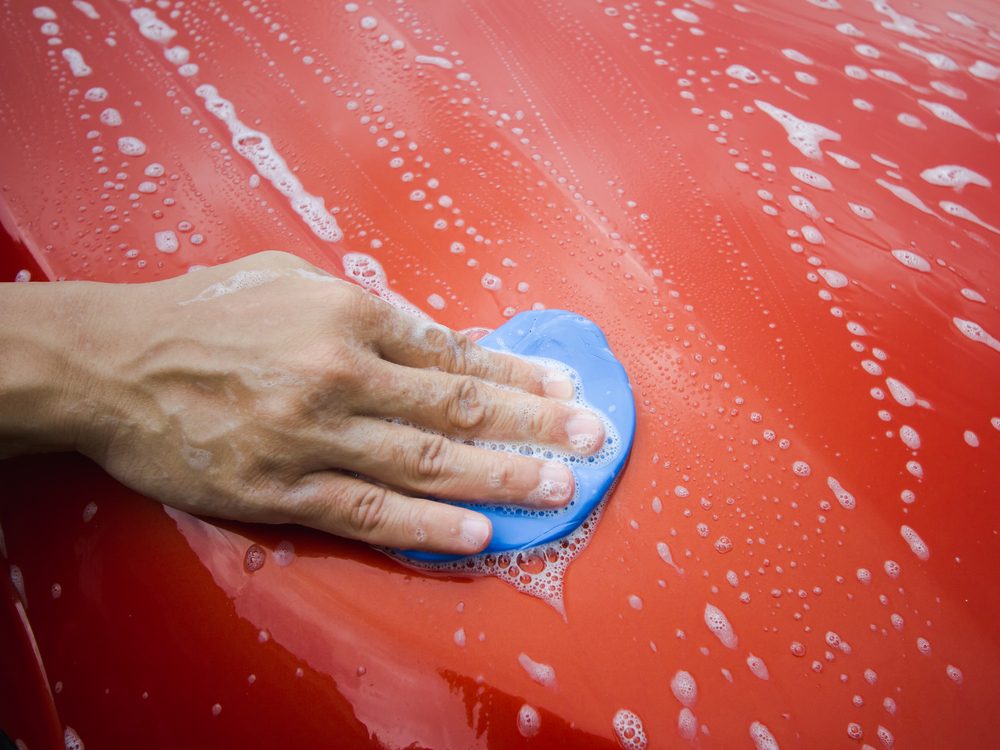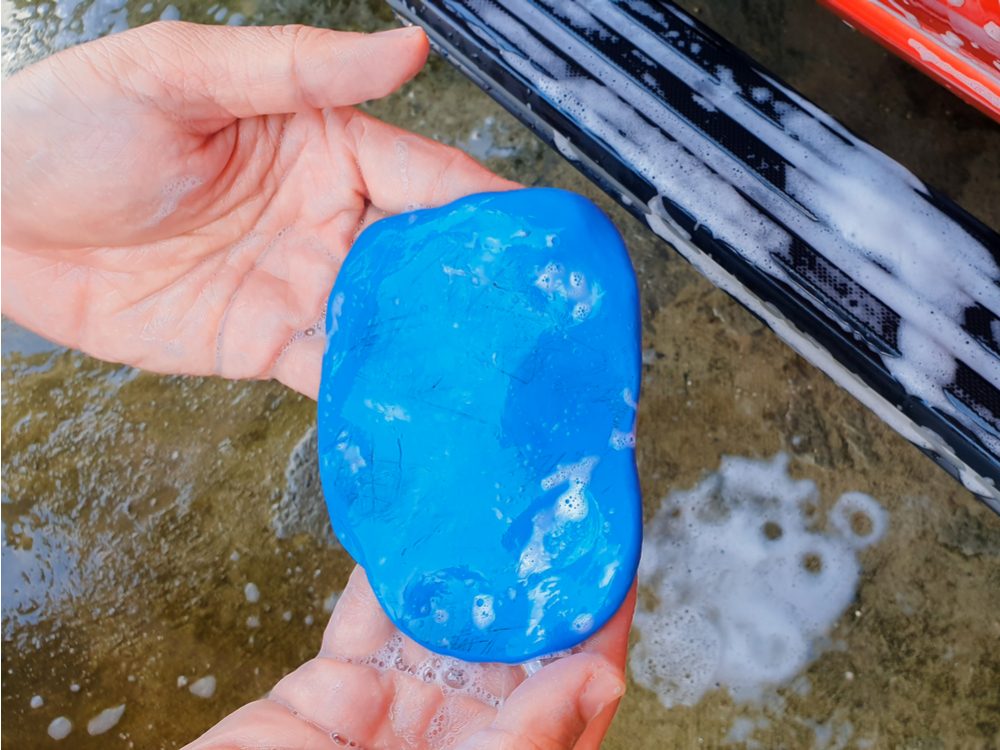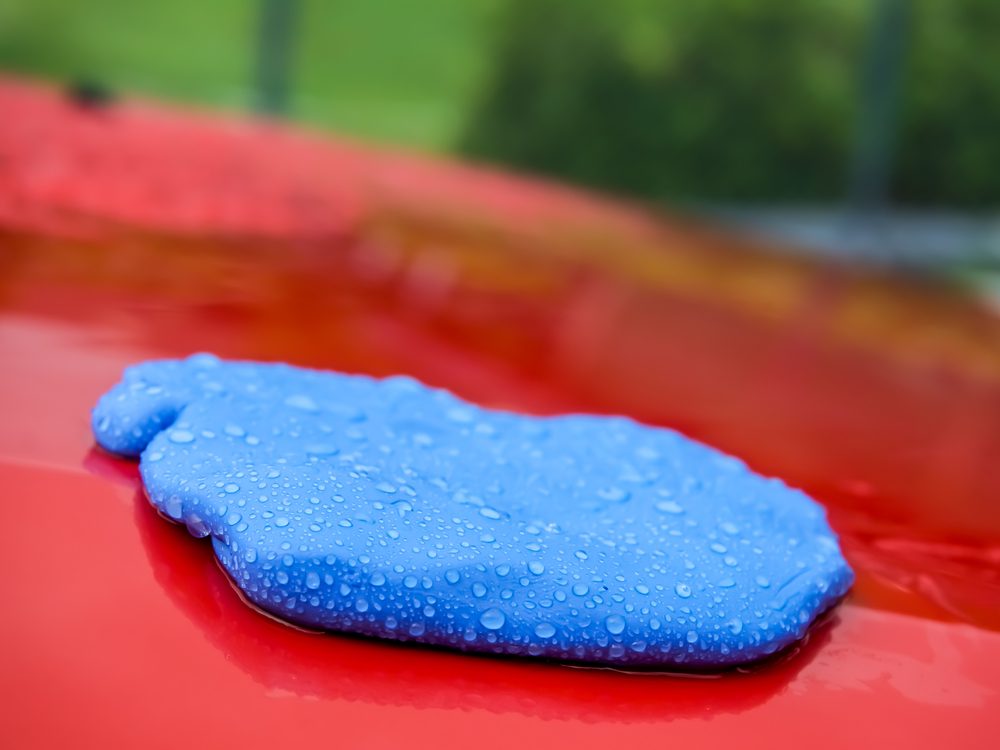
What a clay bar does to your car
Washing your car thoroughly after a long winter season is a key component of protecting its finish over the long term. Allowing the salt and grime that has accumulated over the cold weather months to sit on your vehicle’s paint, chrome, and plastic, can dull its shine and encourage chemical reactions that may permanently damage your clear coat.
While it’s certainly satisfying to attack the dirt on your vehicle with a sponge and a bucket on a warm spring day, removing just the surface level of gunk, no matter how clean your car or truck might look afterwards, should be only part of your approach. In order to really dig down into your paint and snag the contaminants embedded within it, you’ll need to tag in an inexpensive, yet incredibly useful piece of cleaning kit: the clay bar. (Yes, the same stuff that’s dug up out of the ground.)
Over time, clear coats and enamels trap certain contaminants within themselves that are so bonded to the finish that they can’t be removed by simple washing. These can include small metal filings, certain airborne chemicals, and in some cases, oxidation related to road salt. If you’ve ever run your hands along a painted panel and had it feel just a little bit less than smooth, what you’re sensing are these contaminants. Think of clay as being like an ultra-sticky Velcro that grabs onto these unwanted particles and pulls them right from your paint.
Check out more essential tools no car mechanic should be without.

How to use a clay bar on your car
If you pair your clay bar with proper lubrication and are careful about which grade of clay you use, you aren’t risking any damage to your paint’s shine. And remember: only ever clay a vehicle after it’s been fully washed, because you don’t want to drag surface dirt across your body work.
To properly use your clay bar, you must first wet down the panel you’re cleaning using either a dedicated clay lubricant or something like a quick detailer. The idea is to give the clay a layer of liquid to slide across smoothly. Next, divide the clay bar into thirds or fourths, being careful not to let it touch any surfaces that may be dirty—you don’t want to transfer anything from a tabletop to your vehicle. Cutting up the bar means if you drop a piece while working, you can throw it away and still have some left over to finish the job—once clay has touched the ground, it’s too contaminated to continue using.
With the piece of clay flattened out in your hand and the paint misted in a layer of liquid, pull the clay in one single direction in a straight line across your paint. Don’t swirl, or make circles, and use a steady but not too strong pressure. You might feel a small tug as the clay pulls particles out of your finish. After a few passes, take a look at the side of the clay that was touching the paint. If you can see dirt, fold the clay over on itself and use it again. Continue until you can no longer fold to a clean surface, and then replace the piece of clay.
You’ll know a panel is clean once it feels smooth under your fingertips—especially as compared to your unclayed panels. There’s no need to go through the clay bar process each and every time you wash your vehicle. At least twice a year, however, typically with the changing of the seasons and especially after the abuse your vehicle endures during winter driving conditions, taking this extra step is a great way to prolong the life of your paint by making sure it’s as clean as possible.
Here’s how to fix paint chips on your car before it’s too late.

What to look for in a clay bar
There are different grades of clay out there, but you’ll mostly want to stick to fine and medium ratings. Medium is a more aggressive clay that you should only use on a vehicle that has visible paint contamination, as there’s a greater chance it could mar your paint after it’s been used (which can typically be remedied by polishing afterwards). Fine clay is safer to use and appropriate for newer vehicles, and is generally the best grade to apply to plastic and trim.
One more thing to keep in mind is that clay will also remove any layers of wax that may have accumulated on your paint. It’s always a good idea to pair a clay session with an application of fresh wax so as best to protect the newfound cleanliness of your paint.
Now that you know what a clay bar does, find out 13 car washing tricks the pros don’t want you to know.